African grey parrots, or simply “grey parrots,” are a species of parrot most well known for their advanced speaking abilities. Some individuals have had astoundingly high vocabularies and problem solving abilities. These birds are native to Central Africa, and are also known as Congo grey parrots, or African greys. Read on to learn about the African grey parrot.
Description of the African Grey Parrot
In comparison to other parrot species, these birds are medium sized. The typical specimen weighs in at 14 ounces on average, are about 13 inches long, and have an 18 – 20 inch wingspan. They have grey feathers across their bodies, and black colored beaks.
Their eyes are yellow, and the surrounding feathers are short and white, giving a mask-like effect. Selective breeding of pet birds has resulted in red colored feathers of varying patterns.
Interesting Facts About the African Grey Parrot
There are simply endless amazing facts about these birds. Both the species as a whole, and individual animals, can astound you with their intelligence. Learn more about this amazing creature below.
- Intelligent Alex – One African grey, named Alex, was a famous bird studied by scientist Irene Pepperberg. Her research (detailed in her book Alex & Me) showed that these birds are capable of great intelligence. Alex could identify 50 different objects, could identify seven colors, five shapes, and more.
- Pet Parrots – A high intelligence can make it difficult to keep these birds, and many other parrot species, happy. They bond very strongly to their owners, and require lots of attention and environmental enrichment. If you are considering a parrot as a pet, make sure you do your research first!
- Trading Trouble – Another important consideration in owning any pet parrot is where your bird came from. The pet trade is a large contributor to the decline of wild African grey populations. When looking for any exotic pet, always choose a responsible breeder rather than purchasing a wild-caught bird.
- Long Lived – Not only are these birds incredibly intelligent, they are also incredibly long lived. Some individuals have been known to live up to 80 years! This is another important consideration when deciding to have a parrot as a pet. In the wild, most birds do not survive longer than 23 years due to deforestation and other dangers.
Habitat of the African Grey Parrot
These birds are restricted to a relatively small range in their natural habitat. They are most commonly found in lowland forests with plenty of vegetation, but have been found at higher elevations as well. In some areas they can be found up to 7,200 feet above sea level. Some other common habitats include mangrove forests, clearings, savannas, gallery forests, and even urban parks and gardens.
Distribution of the African Grey Parrot
In the wild, these birds are found in equatorial African forests. Populations can be found in the Congo, Uganda, Angola, Kenya, Cameroon, Ghana, and the Ivory Coast. Unfortunately their populations and range are constantly decreasing. Some of these parrots have also been released (or escaped) in the U.S. state Florida, but have not established a breeding population to date.
Diet of the African Grey Parrot
For the most part, these birds are frugivorous, which means that the vast majority of their diet consists of fruit. Their primary food sources are fruits, nuts, and seeds, but they are also known to eat tree bark, flowers, insects, and snails.
Their favorite food source in the wild is oil palm fruit. When searching for food, these birds will fly or climb to the ground to forage for ripe fruit that has fallen from trees.
African Grey Parrot and Human Interaction
These parrots are very common as companion animals, or pets. They are incredibly skilled at mimicking human speech, and are known to have a very wide vocabulary. Unfortunately, this means that the market for sale of these birds is quite high. Every year, approximately 21% of the wild population is captured for the pet trade. Many of these birds die before they ever reach their sellers, and mortality rates range between 60 – 66% in captured birds.
Domestication
While parrots have been bred in human care, and have been selectively bred, they have not been domesticated. Selective breeding of these birds has not occurred over a long enough time period to qualify as domestication.
Does the African Grey Parrot Make a Good Pet
For some people, African grey parrots can make wonderful pets. When considering if these birds are a good fit for you, it is important to take into account the amount of time and attention they require. Also consider the very long lifespan of such a pet, and the commitment that entails. If you have the space, and the free time to dedicate to their care, they can make a wonderful pet. Make sure you do your research before purchasing any new pet.
African Grey Parrot Care
In human care, African grey parrots can be provided with a pelleted diet that is supplemented with fresh fruits and vegetables. They are commonly fed sunflower seeds, pears, oranges, apples, carrots, pomegranates, bananas, cucumbers, peas, celery, and more. It is important to make sure they have a calcium source as well.
Stagnant birds can become overweight, so they should have plenty of time for play and exercise outside of their cages. This is also important for the bird’s mental health, and poorly-stimulated birds can become sick, cause destruction, and become boisterous and loud.
Behavior of the African Grey Parrot
These social birds are commonly found in very large groups. While they forage in smaller congregations, when they return to the trees for the night they can number as many as 100 birds or more! These night gathering places are called “roosts.”
When they return to the roost at night, they choose spots high up in the trees, to sleep where they are safest from predators. Individual birds will commonly remain with their mate while foraging and roosting.
Reproduction of the African Grey Parrot
These birds are monogamous, which means that they will remain with the same mate year after year. They choose a tree cavity to nest in, and the female will lay between 3 and 5 eggs inside. She sits on the eggs, incubating them for about 1 month, while her mate brings her food.
Once the chicks hatch, both parents will care for them. Once they are 12 weeks old the chicks will leave the nest and begin to learn how to fly. Their parents will continue caring for them for a few more weeks before they become fully independent.


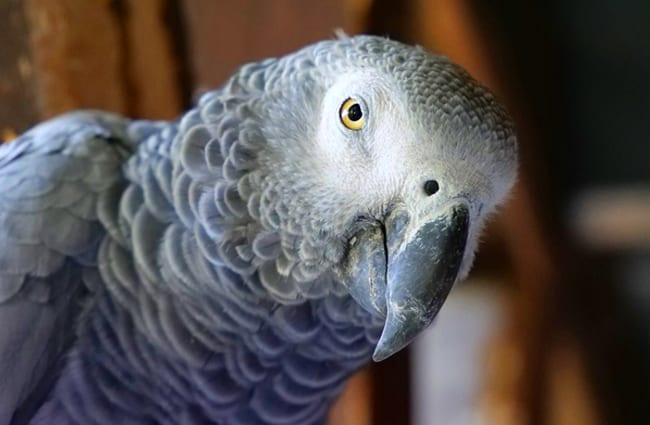

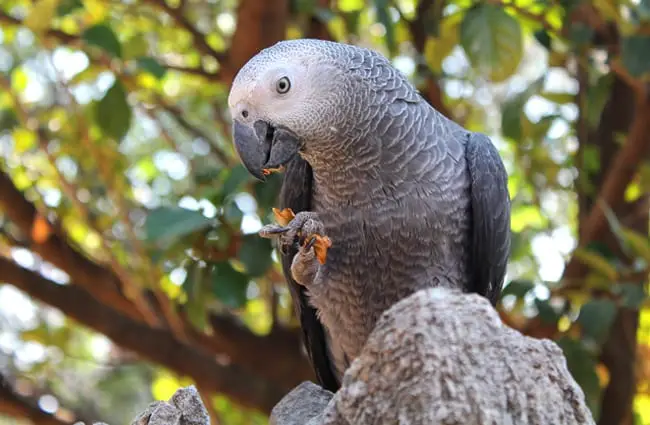

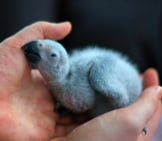
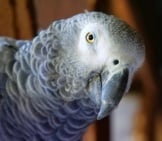

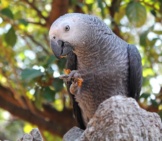

![Red Angus Closeup of a beautiful Red Angus cowPhoto by: U.S. Department of Agriculture [pubic domain]https://creativecommons.org/licenses/by/2.0/](https://animals.net/wp-content/uploads/2020/03/Red-Angus-4-238x178.jpg)












![Red Angus Closeup of a beautiful Red Angus cowPhoto by: U.S. Department of Agriculture [pubic domain]https://creativecommons.org/licenses/by/2.0/](https://animals.net/wp-content/uploads/2020/03/Red-Angus-4-100x75.jpg)

